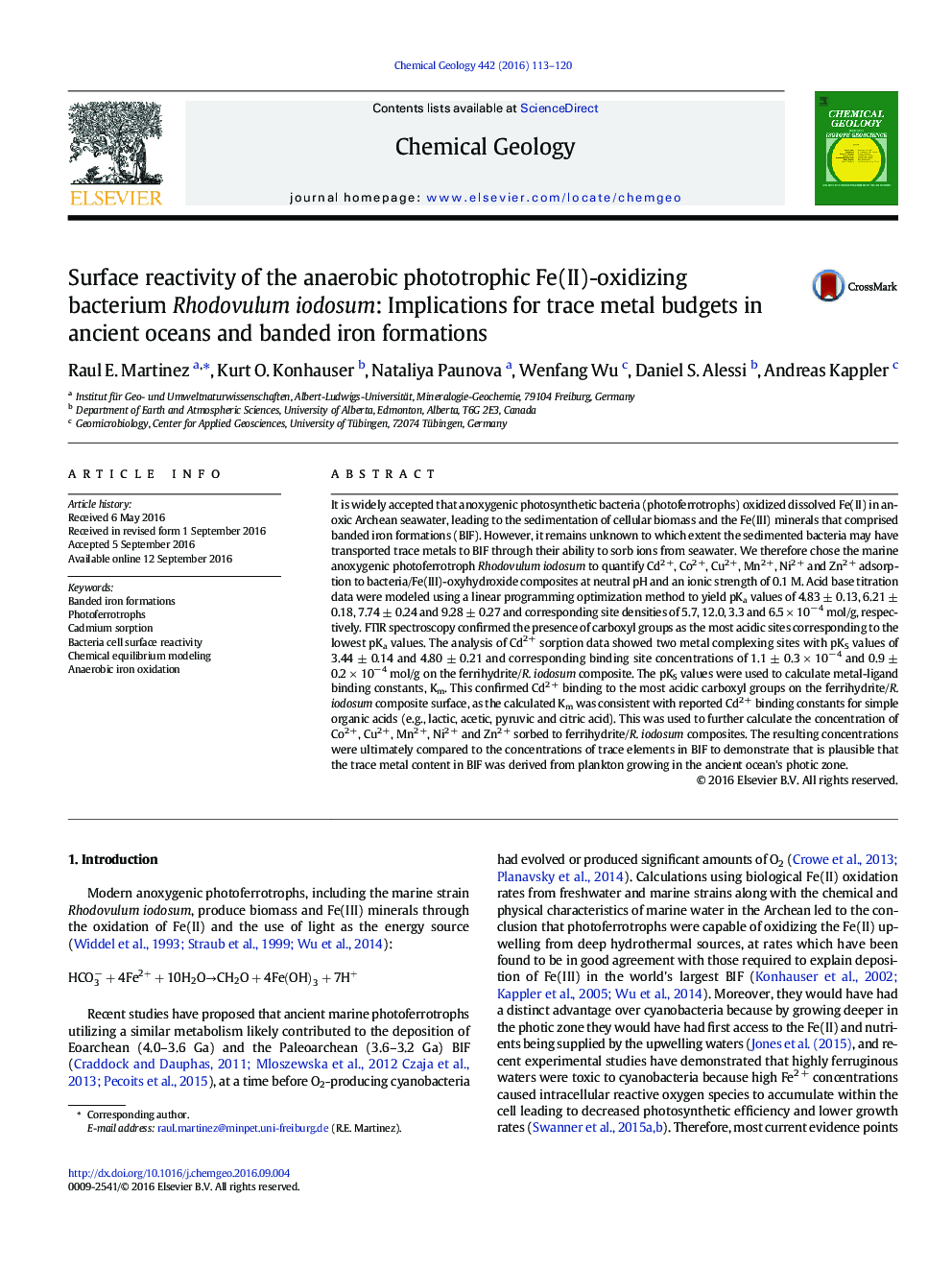| Article ID | Journal | Published Year | Pages | File Type |
|---|---|---|---|---|
| 4698192 | Chemical Geology | 2016 | 8 Pages |
It is widely accepted that anoxygenic photosynthetic bacteria (photoferrotrophs) oxidized dissolved Fe(II) in anoxic Archean seawater, leading to the sedimentation of cellular biomass and the Fe(III) minerals that comprised banded iron formations (BIF). However, it remains unknown to which extent the sedimented bacteria may have transported trace metals to BIF through their ability to sorb ions from seawater. We therefore chose the marine anoxygenic photoferrotroph Rhodovulum iodosum to quantify Cd2 +, Co2 +, Cu2 +, Mn2 +, Ni2 + and Zn2 + adsorption to bacteria/Fe(III)-oxyhydroxide composites at neutral pH and an ionic strength of 0.1 M. Acid base titration data were modeled using a linear programming optimization method to yield pKa values of 4.83 ± 0.13, 6.21 ± 0.18, 7.74 ± 0.24 and 9.28 ± 0.27 and corresponding site densities of 5.7, 12.0, 3.3 and 6.5 × 10− 4 mol/g, respectively. FTIR spectroscopy confirmed the presence of carboxyl groups as the most acidic sites corresponding to the lowest pKa values. The analysis of Cd2 + sorption data showed two metal complexing sites with pKS values of 3.44 ± 0.14 and 4.80 ± 0.21 and corresponding binding site concentrations of 1.1 ± 0.3 × 10− 4 and 0.9 ± 0.2 × 10− 4 mol/g on the ferrihydrite/R. iodosum composite. The pKS values were used to calculate metal-ligand binding constants, Km. This confirmed Cd2 + binding to the most acidic carboxyl groups on the ferrihydrite/R. iodosum composite surface, as the calculated Km was consistent with reported Cd2 + binding constants for simple organic acids (e.g., lactic, acetic, pyruvic and citric acid). This was used to further calculate the concentration of Co2 +, Cu2 +, Mn2 +, Ni2 + and Zn2 + sorbed to ferrihydrite/R. iodosum composites. The resulting concentrations were ultimately compared to the concentrations of trace elements in BIF to demonstrate that is plausible that the trace metal content in BIF was derived from plankton growing in the ancient ocean's photic zone.
